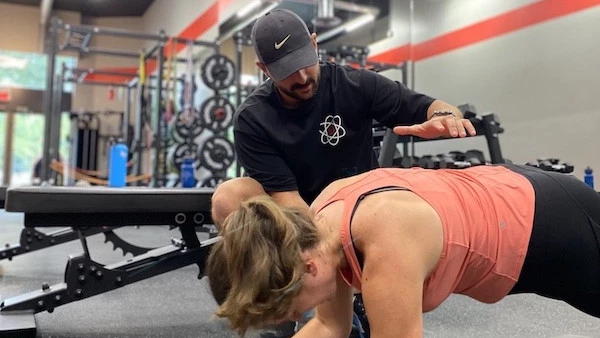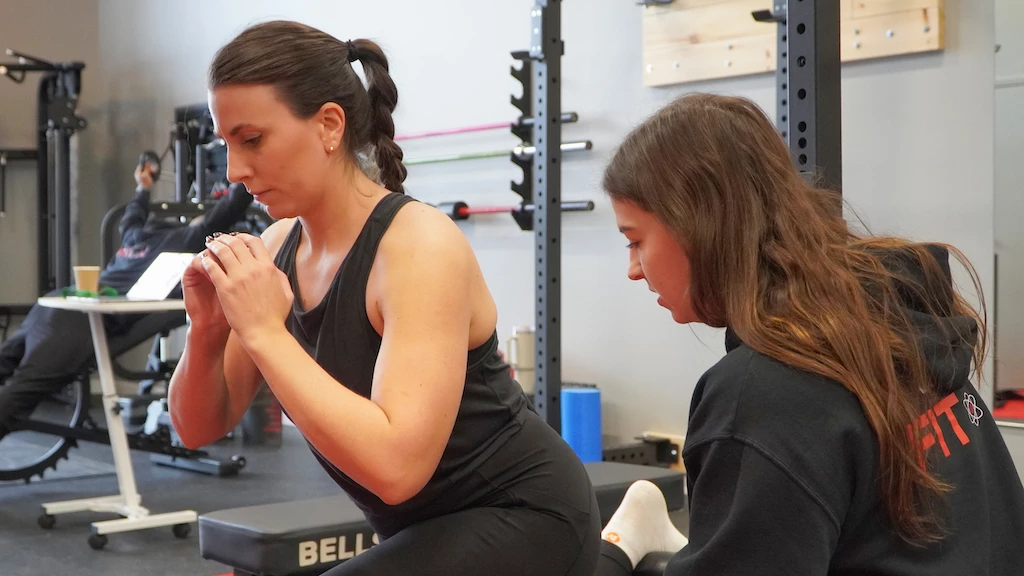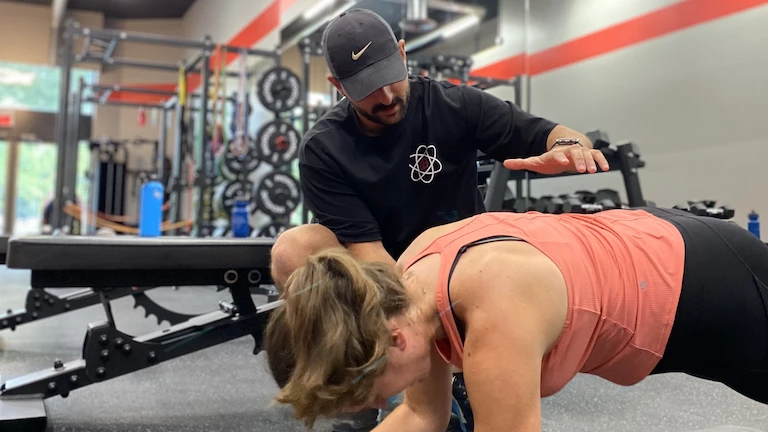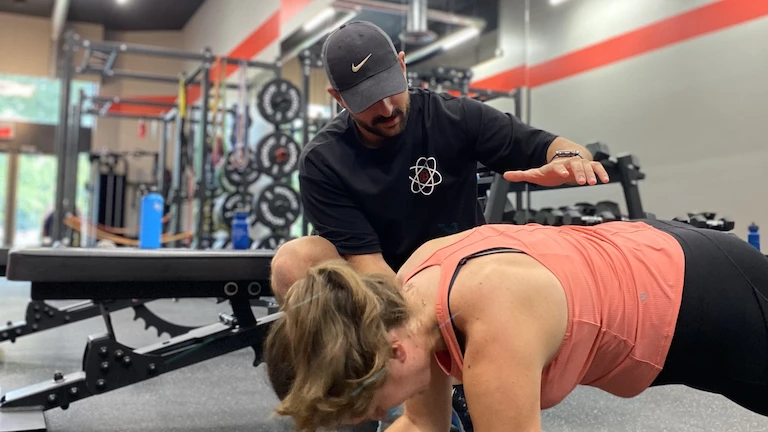To perfect form or not to perfect form?
Studio Fit U
Published: 06/12/2022
Update: 28/01/2025

Should you always lift with perfect form?
There is a wrong way and a right way to do every exercise. When you do a squat you would ideally want your back to keep a neutral position and avoid having your knees caving in, but apart from that, the rest of your technique will mostly depend on your goals. Powerlifters will squat with the bar positioned lower on their back and will lean forward more on the descent. This will allow them to use their hips more and thus lift heavier weights. That’s their goal, lift as heavy as possible. Bodybuilders on the other end will place the bar higher on their traps and try to keep more of a vertical angle with their torso. This will allow them to use more quads and less hips. That's their goal, build the biggest quads as possible. Both types of athletes will nonetheless keep their back in a neutral position and their knees in line with their foot. But why is that? Lifting with a neutral back and your knees inline with your foot will allow you to properly load your legs and lessen the chances of injuries, but should you stop as soon as you feel your back moving or as soon as you feel your knees are losing their alignment? Maybe not.
Form and performance
One of the main reason you would want to improve your form is to improve your performance. If for example when you do a dumbbell bench press and you don’t feel your pecs working at all but your triceps are on fire after the fifth rep, there is most likely a problem with your form. Your shoulder joints are probably not positioned in way that lets your pectoral exert a lot of force during the movement. See, in order for a muscle to contract, it has to be stretched first. If because of my form, I keep my pectoral muscle shortened during the whole exercise it won’t be able to contribute much to the movement. Maybe if you would open up your chest more by bringing your sternum up and by bringing your shoulder blades together you would allow your pectorals to contribute more to the movement. Lifting with the right form will open up a new world of progress as it will allow every muscle to contribute fully as they should to the movement you’re trying to do. You will be able to lift heavier and have a workout that’s much more efficient. The same goes for squats. If you round your back during the squat you will probably only feel your lower back working. Your hips won’t be contributing fully the your squat and will not get the stimulus they should get from the squat. If you want to get the most out of the exercises you do in your training you should definitely always be looking at ways you can improve your form.
Form and injuries
Injuries in resistance training are much more rare than in most sports. I’ve played football most of my life and I saw countless injuries happen on the field, but only a few in the weight room. The only time I injured myself In the weight room was because of my own stupidity, I was doing some jumping lunges next to a dumbbell. Little did I know I was actually slowly getting closer and closer to the dumbbell and something completely inevitable happened. I landed on the dumbbell and sprained my ankle. It wasn’t the dumbbell that’s was dumb that day, it was me. My point is if you’re aware of your surroundings, take calculated risks, progress at a reasonable rate, chances are you’re never going to get injured in the gym even if your form is not 100% perfect. If on top of that you’re supervised by one of the amazing kinesiologist at Studio fit U, you’re in business to stay injury free. I still do believe that having the best form puts you at a lesser risk of injury and its important to try to achieve it most of the time. If you have the best form, it means you're actually putting the load on the muscles that should be carrying it. If I bend my spine as soon as I start my squat, i'm asking all the little muscles of my spine to carry and move that load and they’re not really designed for that. There's nothing wrong with moving your spine but if you’re trying to squat 400 lbs its probably safer to have your hips move the load and have your back perfectly stable. This brings me to my next point: stability. If you lift with a perfect form you’re probably very stable. Your weight is not shifting everywhere during your repetitions, you feel like you have control on the load, and you feel comfortable and strong during your whole set.
I once had 2005 Chevrolet Malibu that felt like everything was about to fall apart when I went over 80 km an hour. I never had an accident but I never felt confident driving it. It’s the same with training if you feel that everything is about to fall apart as soon as you use more than your bodyweight, working on your form is going to make you confident that you can push the machine a bit further.
I once had 2005 Chevrolet Malibu that felt like everything was about to fall apart when I went over 80 km an hour. I never had an accident but I never felt confident driving it. It’s the same with training if you feel that everything is about to fall apart as soon as you use more than your bodyweight, working on your form is going to make you confident that you can push the machine a bit further.
When should you allow your form to breakdown?
You should lift with perfect form 95% of the time. All your warm up sets should be done with impeccable form. You should use your warm up sets as a way to reinforce perfect form as the default movement pattern that your body is going to use when the weights get heavier. You don’t learn perfect form on your heaviest set, you practice it with lighter weights with the goal that when things gets hard, your form doesn’t breakdown too much. If you rush through your warm up sets you’re missing one of the key benefits of doing them : practicing your technique. Resistance training is just like any other sport, you have to practice your technique until it becomes second nature. When things gets hard or you get tired, it is much harder to focus on your form and if you train at a high intensity it’s normal that your form will breakdown a little bit. The keyword here is a little bit. If you feel that your form is breaking down too much it’s time to rack the bar.
Also, if you’re a beginner you’re bound to having bad form to start with. You have to be bad at something before you become good. The best way to learn the best form and to improve it, is by first making mistakes. Maybe at some point you will realize that having bad form is limiting your progress and then you’ll actually be interested at becoming more efficient with your movements.
Conclusion
Yes having bad form is not ideal, it means you’re probably not as efficient as you could doing an exercise and it also probably brings a little more risk to your training, but it’s not the end of the world. After all, if you always use a weight you're 100% comfortable with it probably means you’re never really testing your limits and training is also about finding your limits and surpassing them. It’s ok to swing the dumbbells on a biceps curl for the last 3 reps of your last set but not a good idea if you have to swing on the first rep of your first set. You should always aim at having the best form possible and if you want to take some risks make sure its calculated. Don’t max out every single workout, give yourself time to recover, increase your weights and your training volume progressively and don’t do jumping lunges with a dumbbell next to you.
In the same category



STUDIO

Personal & Personalized Training
MONTREAL
4824 Ch. de la Côte-des-Neiges, Montréal, QC H3V 1G4